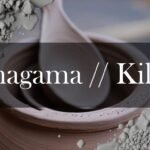Creating your own natural pottery glaze is an exciting journey into the earth’s chemistry, offering a unique connection to the materials around you. It’s about transforming rocks, ashes, and clays into stunning, functional art. This article will guide you through the process, from sourcing and preparing your materials to testing and applying your homemade glazes, ensuring safety and sustainability every step of the way.
The Foundation: Silica, Alumina, and Flux
Every glaze, whether natural or commercially produced, is composed of three essential components: silica, alumina, and flux. Silica (SiO2) is the glass former, melting at high temperatures to create the glassy surface we admire on finished pottery. Alumina (Al2O3) acts as a stabilizer, preventing the glaze from running off the pot during firing and adding durability. Fluxes lower the melting temperature of silica, allowing the glaze to mature at kiln temperatures achievable in most studios. These components are the base of the glaze!
In natural glazing, these components come from various sources: rocks like granite and feldspar for silica and alumina, clays for alumina and silica, and wood ash for fluxes. Understanding the role of each component is crucial for formulating a glaze that will melt properly and adhere to your pottery. You can supplement your foraged materials with purchased whiting, dolomite, or silica to fine-tune your glaze recipe. Unlocking earthy tones with the art of ash glazes can add a unique touch to your creations.
Sourcing and Processing Your Natural Materials
The adventure begins with identifying and collecting potential glaze materials from your local environment. Road cuts, riverbeds, and even your own backyard can be treasure troves of ceramic resources. The “Roadside Geology” book series can be invaluable in helping you identify local geological formations. Local universities or the US Geological Survey (USGS) can also provide information about the composition of rocks and soils in your region.
Once you’ve gathered your materials, the real work begins. Rocks need to be crushed, ground, and sieved to a fine powder. A sledgehammer, ball mill, and a series of sieves with different mesh sizes are essential tools for this process. Clays should be slaked down in water, sieved to remove any impurities, and then dried. Wood ash needs to be collected from a clean source, like a wood-burning stove where only one type of wood is burned at a time. The ash should then be sieved to remove any large particles. Each plant’s ash composition differs, with each having its own unique mineral and trace metal content that makes for one-of-a-kind glazes.
This video from Pottery to the People gives a great overview of using paint-on glazes. It’s a helpful supplement to this guide on making your own glazes.
Recipes, Testing, and Troubleshooting
Now that you have your raw materials prepared, it’s time to experiment with glaze recipes. A basic starting point for a natural glaze could be: 40 parts Cornish Stone, 40 parts Plant Ash, and 20 parts Quartz (powdered), plus water. This recipe from ‘Leaf Ash Glazing: A Guide to Sustainable Pottery Glazing with Fallen Leaves’ serves as a base from which you can switch out the type of plant ash used to produce lots of different glazes. Remember to thoroughly mix the glaze with a whisk before and during use.
Testing is crucial. Create small test tiles using the clay body you intend to use for your pottery. Apply the glaze to the tiles and fire them in your kiln. Observe the results carefully. Is the glaze melting properly? Is it crazing (fine cracks in the glaze)? Is it running? Adjust the recipe as needed, adding more flux if the glaze isn’t melting enough, or more alumina if it’s running. The amount of gloss that the glaze produces can be controlled by adjusting the silica to alumina ratio. Be patient and persistent; developing a reliable natural glaze can take time and experimentation.
Safety and Responsible Sourcing
Working with raw materials requires caution. Always wear a NIOSH-approved respirator when handling dry materials to avoid inhaling harmful dust particles. Wear gloves to protect your skin, and eye protection to prevent splashes. Ensure your studio is well-ventilated to minimize exposure to dust and fumes. It is good practice to add water to the bucket before adding dry materials to avoid dust.
Be mindful of the environmental impact of your sourcing practices. Collect rocks and clays responsibly, avoiding areas that are protected or sensitive. Use sustainable wood sources for your ash, and consider the impact of your firing on the environment. The goal is to create beautiful pottery while minimizing your footprint on the earth. Always ensure that you are following environmental regulations when collecting materials. Consider also clay recycling, a potter’s guide to sustainability.
Firing temperatures and techniques are also important to consider. Leaf ash glazes, for example, can be fired to stoneware temperatures. You can also put rocks into a bisque firing to make them crumble easier. Be sure to place wild clay or new glazes inside of a “safety bowl” made from your regular, known clay when firing in case your wild clay melts and runs all over your kiln shelves. This can also be done if you do not know the properties of your wild clay or glaze.
Making natural pottery glazes is more than just mixing ingredients; it’s an exploration of your local landscape, a connection to the earth, and a celebration of the unique beauty that can be created from simple, natural materials. While commercial metal oxides that are typically used to color pottery are some of the least environmentally friendly pottery materials, natural pottery glazes allow for eco-conscious coloring. So, gather your materials, put on your safety gear, and embark on this rewarding artistic journey. With patience, experimentation, and a deep respect for the materials you’re working with, you’ll be creating stunning, sustainable pottery in no time.





